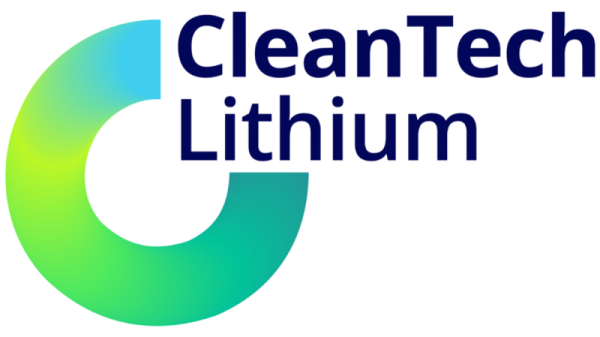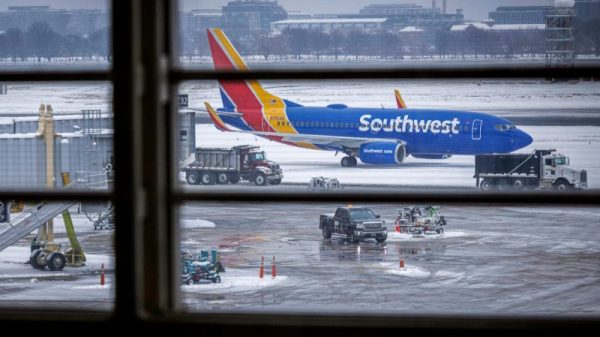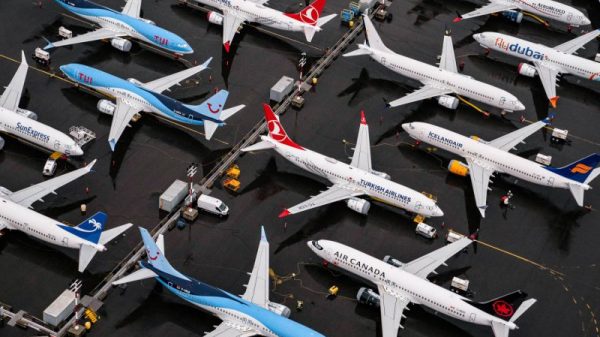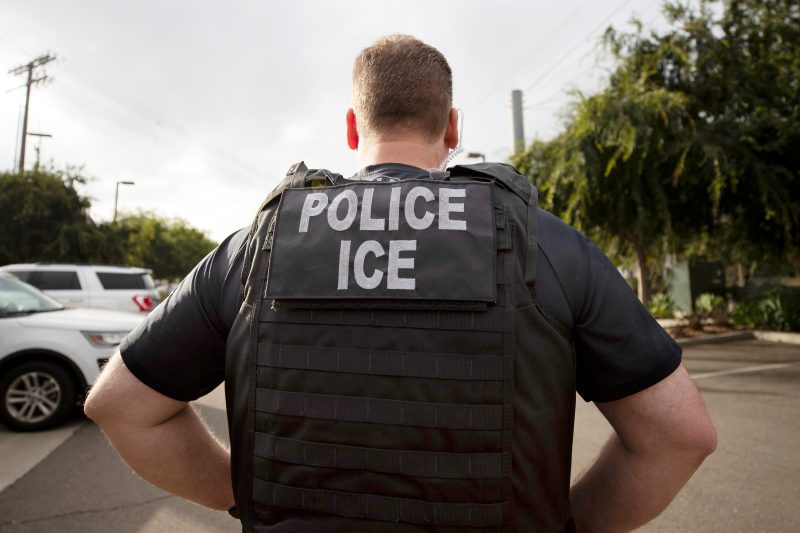Drug dealers, terrorists and other villains are adept at finding ways to hide their cash.
Unfortunately, U.S. authorities don’t have the resources to keep pace with the criminal mind.
That’s a problem for U.S. Immigration and Customs Enforcement, better known as ICE. A department watchdog said the agency’s “limited ability to identify and combat” what Washington calls “trade-based money laundering (TBML) schemes” is a threat to national security.
With these schemes, “criminal organizations use illicit cash to buy goods, which are imported and sold in another country. The sale proceeds are returned to the criminal organization, which completes the laundering,” according to a new report from the Department of Homeland Security’s Office of Inspector General.
“Trade-based money laundering is the common thread tying together drug and human trafficking, counterfeit products, and terrorism,” said Sen. Bill Cassidy (R-La.), who has introduced bipartisan legislation that would create a cross-border financial crime center.
ICE does not have the technical capabilities to adequately detect the myriad ways outlaws find to shield their money. Like many governmental agencies, it is short on up-to-date technology. ICE lacks the automated systems needed to effectively battle modern-day money laundering. Instead, it relies on time-consuming manual searches of import records.
It also does not have enough employees for the job.
“ICE does not retain the expertise needed to identify and combat TBML schemes, relying instead on temporary promotions and 18-month tours to fill staffing needs,” the report said. “ICE has not allocated enough funding to hire the additional full-time permanent staff” needed “to achieve its mission.”
But it’s not only an ICE issue.
Arguing that American deaths from the illicit fentanyl drug trade is a national security problem, Marshall Billingslea, a Hudson Institute senior fellow and a Trump administration Treasury assistant secretary for terrorist financing, called the money laundering “a massive problem” that Washington “has been grappling with actually since the ’80s, when the Colombian cartels started using a very elaborate scheme.” That scheme, he said, “has gotten even more elaborate in connection with the fentanyl trade because it now also involves the Chinese.”
“Left to its own, ICE is not going to be able to tackle this problem,” added Billingslea, who also was president of the global anti-money-laundering Financial Action Task Force. “It’s a much broader problem that absolutely requires cooperation of multiple law enforcement agencies.”
In a letter to Inspector General Joseph V. Cuffari included in the report, Max Aguilar, ICE’s acting chief financial officer, agreed with the audit’s recommendations to implement a detailed systems upgrade work plan to identify trade-based money laundering transactions and to conduct a workforce analysis to determine staffing requirements. ICE has “prioritized replicating the most needed features from the previous legacy system while concurrently developing” a new one, Aguilar wrote, which will “enable automated identification of TBML activity in the future.”
Despite old IT, short staffing and the complexities of modern money laundering, ICE arrested 444 people and seized more than $356 million through trade-based investigations from fiscal 2019 through 2021, the audit found.
Investigations by ICE, the Internal Revenue Service and other agencies led to the convictions of Virginia Garcia Moreta and Hector Rodriguez Mendez, who were sentenced to 70 and 63 months in prison, respectively, in October. The two, who were based in Tampa, laundered over $20 million in drug money from more than 400 transactions using “bundles of cash” to buy cashier’s checks, which were given to other conspirators, according to the IRS.
In another case, Huazhi Han of North Riverside, Ill., got seven years in prison for using $1.5 million in drug money to buy and then sell electronic devices. The proceeds were sent to drug traffickers in Mexico, the IRS reported in November. In 2018, seven people were charged in Islip, N.Y., with using family-owned businesses to launder money from drug dealers “through the actual and purported purchase and export of mobile phones,” according to the Justice Department.
Arrests and convictions are good, but how many more criminals would have been arrested and how much more money would have been seized with modern computer systems and full staffing?
“Criminal organizations use these trade transactions to disguise their criminal proceeds and finance terrorism and other illicit activities,” the inspector general’s report said. The report added, “Until ICE addresses technology and staffing limitations, TBML-related imports will continue to go undetected, thus allowing transnational criminal organizations to finance activities, threatening U.S. national security.”
This type of money laundering takes several forms, according to the audit. One is ghost shipping, “in which a buyer and seller collude to prepare all the documentation indicating goods were sold, shipped, and paid for when no goods were shipped,” the audit said. Another uses shell companies with no real assets or business operations. A different variation uses numerous invoices for the same goods, allowing money launderers to score additional payments.
“Schemes can involve a variety of sectors and commodities, from auto parts to second-hand textiles,” the inspector general’s report explained, “meaning no one scheme is like another, and these difficulties have led to a relatively small number of successful TBML investigations worldwide.”
While the number of successful investigations is small, the amount of money involved is huge. Criminal organizations launder about $1.6 trillion annually worldwide, according to the report, citing data from a 2011 United Nations study, which also said less than 1 percent of money laundered is seized by law enforcement.
Here’s another huge number: The audit determined ICE’s trade transparency unit analysts would have to “manually search more than 1.9 billion import records to identify any discrepancies indicative of TBML.”
The scope of the problem far exceeds the nation’s current capabilities.
“The U.S. government as a whole has not dedicated sufficient staffing or resources for new technologies to address TBML,” said Tom Cardamone, president and CEO of Global Financial Integrity, a think tank that focuses on money laundering. “As currently constructed, the U.S. government is wholly unprepared to adequately address the threat.”





























